Photo: Canva Pro
Photo: Canva Pro
Photo: Canva Pro
Photo: Canva Pro
Photo: Canva Pro
Photo: Canva Pro
Advertisement

If the horse bucks or rears during riding, it is often a reaction of physical or mental discomfort. There are a lot of studies that show that this type of behavior during riding often can be explained by physical pain and that the behavior often disappears when the pain is treated.
The horse is a prey animal who is programmed to run away from a situation where it feels pressured. If the horse tries to run you over in a training situation, it is often because it feels uncomfortable or has a high level of stress.
Sources:
Michael D. Breed - et. al. Animal Behaviour
Ole Husen, Ib Geert Petersen & Ralph Sonne-Hansen - Grundbog i Genetik, Evolution og Etologi
Roger Abrantes -Dog Language
Barry Eaton - Dominans og Lederskab, Fakta eller Overtro
Andrew McLean – Træning af Heste på Hestens Præmisser
Janet Jones - Horse Brain, Human Brain: The Neuroscience of Horsemanship
Suzanne Rogers - Equine Behaviour in Mind: Applying Behavioural Science
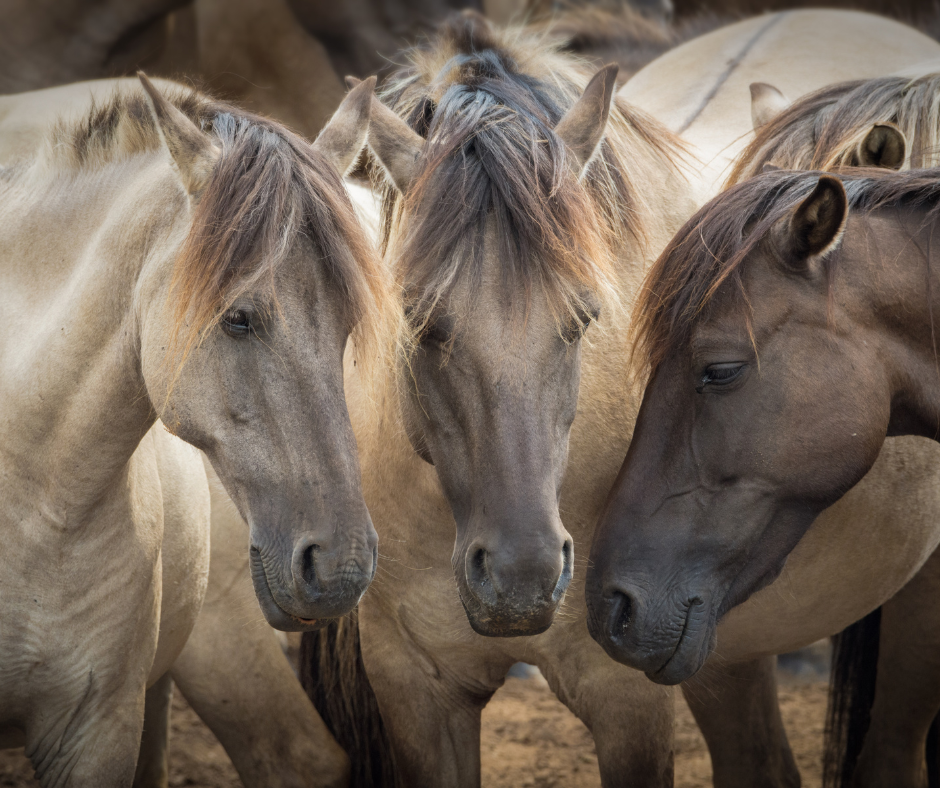
Pressure is not the same as dominance
Throughout the 1990s, horsemanship became exceedingly popular. In horsemanship, horse training should include focus on the corporation between horse and human based on the understanding of the horse’s natural behavior and needs.
A lot of the training methods were based on observations of horses in nature, and among the most central elements in these observations was dominant behavior. A lot of horsemanship training is based on building human imitations of dominant behavior, where the human applies pressure to the horse, which moves, after which the human removes pressure.
This approach is widely used in horse training and riding, and it works. It is completely natural, that if you apply pressure to the horse when it performes a specific act, and then removes pressure, the horse will learn that it has to respond in order for the pressure to disappear.
That link has been wrongly perceived by us. We think that we dominate the horse, but actually it is simple learning psychology. This training approach has undeniably also contributed to the idea that we must be leaders for our horses.
So the horse should be in charge?
There is a big difference between dominating and being the one in charge in a given situation. The idea of horses being able to perceive us as leaders, and that we have to imitate dominant behavior that horses show among themselves, has been denied by science for years.
It's not about the horse taking charge
Thus, it is not about the horse trying to take charge or us letting it. It is about analyzing the reason why the horse is behaving in a way that we find dominant, and trying to remove that reason. This might require help from a vet, body worker, behavioral expert or trainer with an understanding of horse behavior and psychology.
Of course, it is appropriate for us to take charge on some level because it can become dangerous, if the horse does not learn to respond to our signals. There is a very big difference between teaching the horse to corporate and respond to our signals in a positive way – and being the dominant leader.
Behavior based on experience and past
Today we know that the horse’s behavior is partly based on what it has experienced in the past combined with the learnings it has collected through life. In addition, the horse’s physical state has great importance for how it reacts.
Instinctive behavior and training
It is the horse’s instincts that tells it to run away if something is potentially dangerous. The body triggers elusive reflexes if you ask the horse to do something that causes pain – or it does not have the necessary strength to perform. The learnings and experiences are to a high degree controlled by us and the input that we give the horse during management and training.
If we are good at guiding the horse and showing appropriate behavior, as well as indicating when it does the right things, we are skilled trainers. Appropriate corporation is about clear and kind communication.
If the horse does not understand what we mean, we must try to change strategy instead of just increasing pressure. If it is not able to perform something specific, it might be a good idea to check if it is in pain.
Also, we must remember to tell our horses when they are doing the right thing. They are not able to know that if we do not communicate it. We can communicate this with contact, praise, treats, reduction of pressure, etc.
In other words, it is time to let go of the old ideas of dominance and leadership. Instead, we should base the relationship between horse and human on the knowledge of horse behavior and learning psychology combined with appropriate practical execution.

We also see situations where it simply is about lack of appropriate training. If the horse does not respect your personal space and that results in interaction where you might talk to the horse, it might find this more appropriate than to walk beside you. Simply because it never is comfirmed in the desired behavior. For that reason it is very important to confirm behavior that is desirable. We often forget this. Contact, strokes, treats and such are good ways of confirming desired behavior.
Conflict behavior is a description of situations where the horse prefers to avoid an unpleasant situation, but is not able to, and therefore shows another type of behavior. It can be swishing the tail, bucking or rearing. It is very typical in riding situations where the rider gives the horse signals which it does not understand (for example kicking the horse while pulling the reins) or asking the horse to do something that causes pain.
The idea of horses trying to dominate us and climb the social ladder is not supported by science. However, we can still experience situations where it seems like the horse is trying to take charge. If we see this as dominance, it is a mistake. Instead, some of the following circumstances can be present:
The hierarchy is not stationary
Today we know that the relationship between dominance and inferiority – and the hierarchy – varies throughout the day. Therefore, it is not just one horse who is always in charge, as we thought in the past.
This shifts our entire belief that we have to dominate the horse and show it that we are at the top of the hierarchy. Simply because we know that hierarchy does not exist across species.
Also, we are aware that it is not just one horse who is in charge. And that fact does not alter the level of internal respect, understanding and collaboration in the herd. It simply varies in different situations.
And that creates doubt whether it is really necessary to establish yourself as the one in charge or the most dominant.
How does it work in nature?
A role that is always stationary in a herd is the one of the lead mare. It is always a mare that is responsible for leading the herd to water, grass and resting places. She is not necessarily the mare who shows the most dominant behavior. Quite often she will show very little of this, but the herd follows her anyway.
Other members of the herd can also initiate movement, and the other members will typically follow. Thus, it does not have to be the lead mare that initiates movement of the herd. Everyone can take the lead, but it is the lead mare that has the overall responsibility of movement to the areas that include important necessities.
This also agrees with the latest research within dog behavior, which also shows that lead dogs and wolves in a pack are not the most dominant. Instead, they are the ones that take on the greatest responsibility and secure food, look after the other pack members and so on.
Dominance does not give a high rank in the herd
Hence, there is nothing in modern understanding of hierarchy and dominance that states that a high degree of dominant behavior automatically gives a high rank in the herd, gives more respect, improves corporation or anything like that. It is simply small communication components to adjust elements in the hierarchy in specific situations, and the balance between these elements can shift many times during a day.
So why do we believe that it is important to be a leader for our horses?
As humans we are predators, and in our fundamental approach to life we like to take charge. No matter if we want to or not, we have an instinctive and unconscious goal to climb the social ladder and find ourselves on a high level in the hierarchy.
This is reinforced by the way our society is built, where promotions, titles and status have a general importance. This means nothing to horses. But because it is deeply rooted in us and our nature, we unconsciously imagine that horses too have a wish to climb the social ladder and dominate their humans, even though it is not possible.


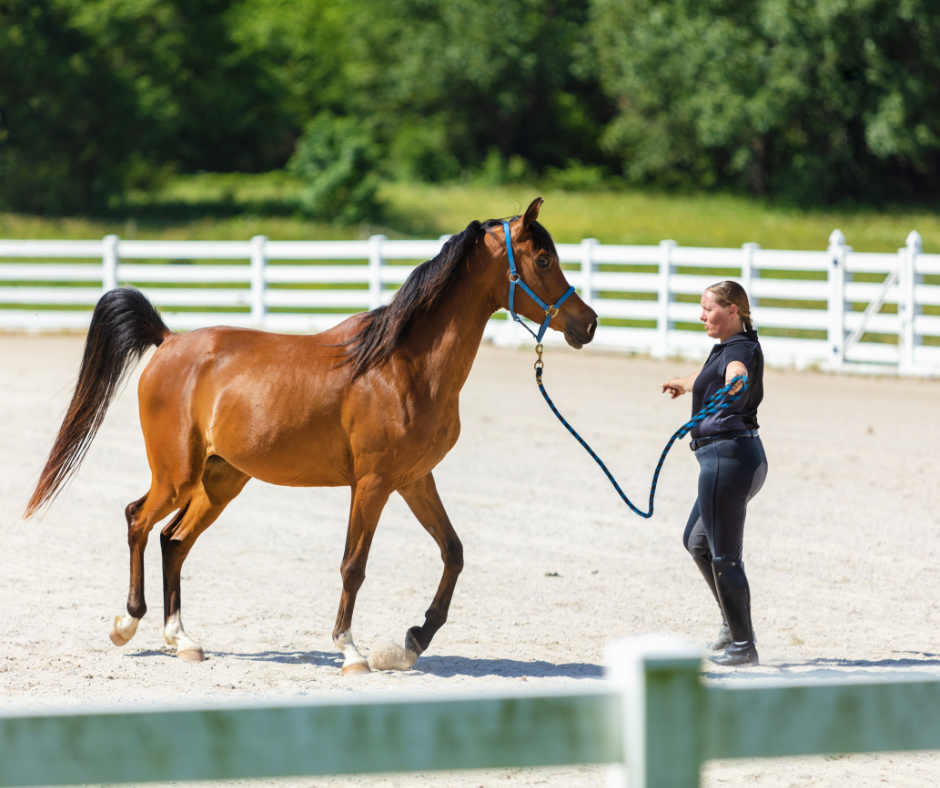
Some training methods are based on the idea that we need to show our horses that we are in charge. In other cases we see the tendency in other, milder forms, such as “the horse has to behave” or “you have to show the horse who’s in charge.” But does it really make sense?
What is dominance?
Dominance is a term that stems from behavioral biology. It is a branch of science that concerns observation and mapping of animal behavior.
Behavioral biology defines dominance as ”The mechanism that has the purpose of eliminating the element of competition within the herd.”
The mechanism controls the underlying motivation behind instinctive behavior. If we take a closer look at the definition in itself, it concludes that the motivation behind dominance is to eliminate the element of competition in the herd.
A species-specific hierarchy
A herd is defined as “a group of individuals of the same species that live together and have an internal hierarchy that can vary based on time, situation etc.”
A hierarchy is “a ranking system within a species that is formed and maintained through dominance and superiority.” Here it is central that we as the definition address it as something that goes on within the same species.
In other words, dominance and hierarchy cannot exist across species, and therefore not between humans and horses. According to behavioral biology, it is simply not possible.
The herd is controlled by behavioral patterns
Dominance can also be called superiority and is the direct opposite of inferiority. Together, these two terms are what define and maintain a hierarchy.
We know from observations that horses use behavioral elements from dominance and inferiority to communicate in the internal hierarchy. An example is when they must find individual spaces around forage when they eat.
When a new horse arrives in the herd, we will often see hard nuances of the behavioral patterns that belong to these categories. But in everyday life we usually see far less nuances because communication flows easily.
The superior horse
When a horse shows dominant behavior towards another horse, the superior horse will usually have a forward leaning body posture and a body language where both weight and movement is towards the other horse. The horse might pin its ears, stare intensely, or maybe even kick, bite or chase the other horse. However, quite often it is enough for the horse to look in the direction of the other horse.
The inferior horse
When a horse shows inferior behavior towards another horse, the behavior will often be in the direction away from the other horse. Elusive posture and behavior – or simply that the horse moves a step or two away from the other horse are all inferior signals.
Dominance versus inferiority
Every time a horse moves the other horse on the field, it is an interaction between dominance from one horse and inferiority from another horse. Interaction between these signals can vary depending on situation, time, composition of the herd and so on.
Thus, a horse can show dominance and get another horse to move away from the hay, but the roles might be switched around later the same day.
By Bettina Hvidemose Riisberg
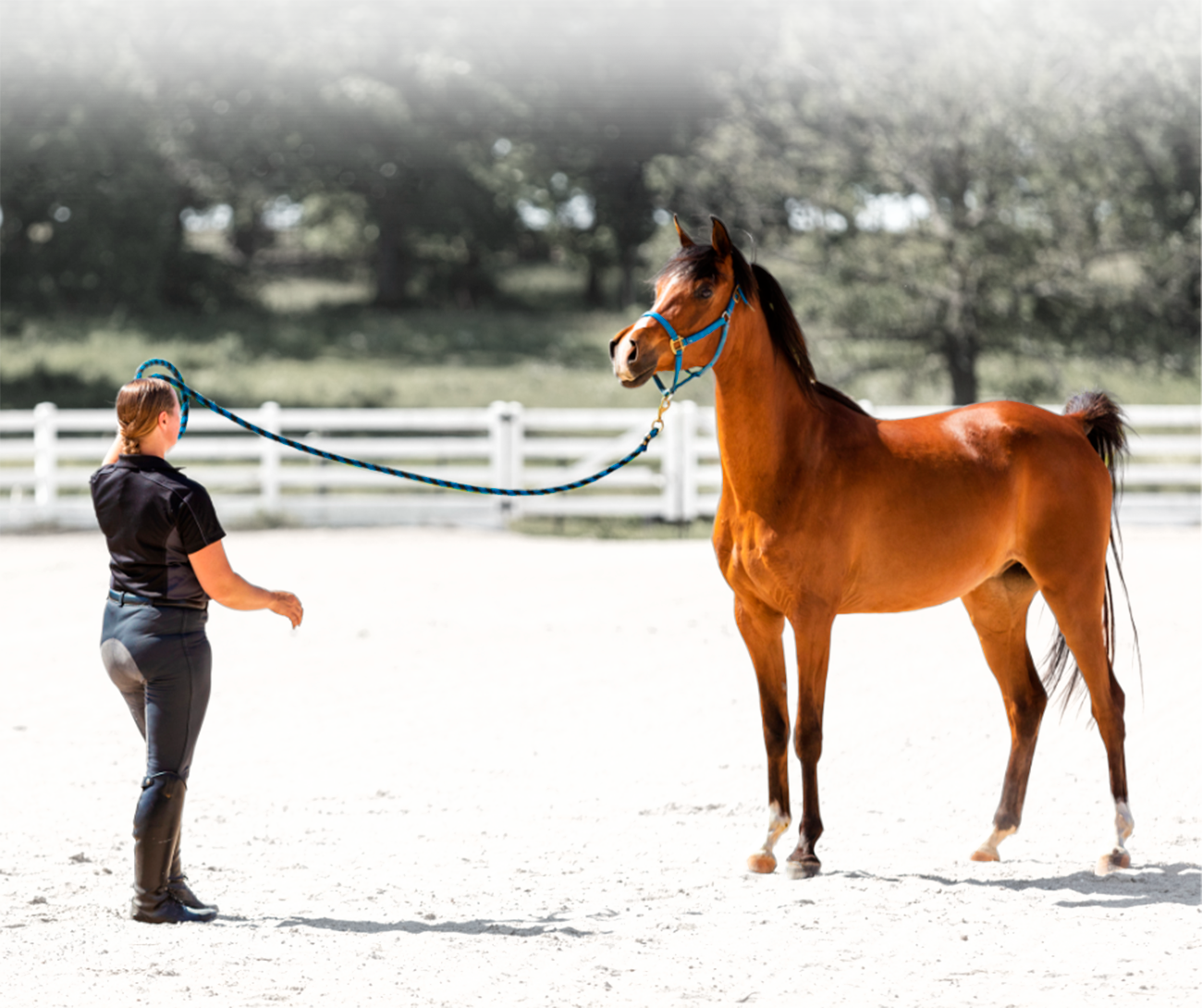
Photo: Canva Pro
Photo: Canva Pro
Photo: Canva Pro
Photo: Canva Pro
Photo: Canva Pro
Photo: Canva Pro
Advertisement

Sources:
- Michael D. Breed - et. al. Animal Behaviour
- Ole Husen, Ib Geert Petersen & Ralph Sonne-Hansen - Grundbog i Genetik, Evolution og Etologi
- Roger Abrantes -Dog Language
- Barry Eaton - Dominans og Lederskab, Fakta eller Overtro
- Andrew McLean – Træning af Heste på Hestens Præmisser
- Janet Jones - Horse Brain, Human Brain: The Neuroscience of Horsemanship
- Suzanne Rogers - Equine Behaviour in Mind: Applying Behavioural Science
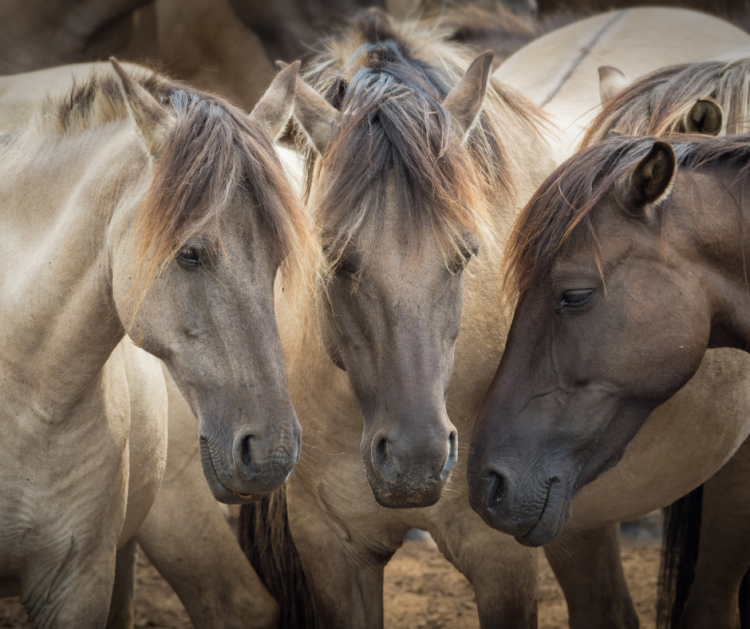
Pressure is not the same as dominance
Throughout the 1990s, horsemanship became exceedingly popular. In horsemanship, horse training should include focus on the corporation between horse and human based on the understanding of the horse’s natural behavior and needs.
A lot of the training methods were based on observations of horses in nature, and among the most central elements in these observations was dominant behavior. A lot of horsemanship training is based on building human imitations of dominant behavior, where the human applies pressure to the horse, which moves, after which the human removes pressure.
This approach is widely used in horse training and riding, and it works. It is completely natural, that if you apply pressure to the horse when it performes a specific act, and then removes pressure, the horse will learn that it has to respond in order for the pressure to disappear.
That link has been wrongly perceived by us. We think that we dominate the horse, but actually it is simple learning psychology. This training approach has undeniably also contributed to the idea that we must be leaders for our horses.
So the horse should be in charge?
There is a big difference between dominating and being the one in charge in a given situation. The idea of horses being able to perceive us as leaders, and that we have to imitate dominant behavior that horses show among themselves, has been denied by science for years.
It's not about the horse taking charge
Thus, it is not about the horse trying to take charge or us letting it. It is about analyzing the reason why the horse is behaving in a way that we find dominant, and trying to remove that reason. This might require help from a vet, body worker, behavioral expert or trainer with an understanding of horse behavior and psychology.
Of course, it is appropriate for us to take charge on some level because it can become dangerous, if the horse does not learn to respond to our signals. There is a very big difference between teaching the horse to corporate and respond to our signals in a positive way – and being the dominant leader.
Behavior based on experience and past
Today we know that the horse’s behavior is partly based on what it has experienced in the past combined with the learnings it has collected through life. In addition, the horse’s physical state has great importance for how it reacts.
Instinctive behavior and training
It is the horse’s instincts that tells it to run away if something is potentially dangerous. The body triggers elusive reflexes if you ask the horse to do something that causes pain – or it does not have the necessary strength to perform. The learnings and experiences are to a high degree controlled by us and the input that we give the horse during management and training.
If we are good at guiding the horse and showing appropriate behavior, as well as indicating when it does the right things, we are skilled trainers. Appropriate corporation is about clear and kind communication.
If the horse does not understand what we mean, we must try to change strategy instead of just increasing pressure. If it is not able to perform something specific, it might be a good idea to check if it is in pain.
Also, we must remember to tell our horses when they are doing the right thing. They are not able to know that if we do not communicate it. We can communicate this with contact, praise, treats, reduction of pressure, etc.
In other words, it is time to let go of the old ideas of dominance and leadership. Instead, we should base the relationship between horse and human on the knowledge of horse behavior and learning psychology combined with appropriate practical execution.

We also see situations where it simply is about lack of appropriate training. If the horse does not respect your personal space and that results in interaction where you might talk to the horse, it might find this more appropriate than to walk beside you. Simply because it never is comfirmed in the desired behavior. For that reason it is very important to confirm behavior that is desirable. We often forget this. Contact, strokes, treats and such are good ways of confirming desired behavior.
Conflict behavior is a description of situations where the horse prefers to avoid an unpleasant situation, but is not able to, and therefore shows another type of behavior. It can be swishing the tail, bucking or rearing. It is very typical in riding situations where the rider gives the horse signals which it does not understand (for example kicking the horse while pulling the reins) or asking the horse to do something that causes pain.
If the horse bucks or rears during riding, it is often a reaction of physical or mental discomfort. There are a lot of studies that show that this type of behavior during riding often can be explained by physical pain and that the behavior often disappears when the pain is treated.
The horse is a prey animal who is programmed to run away from a situation where it feels pressured. If the horse tries to run you over in a training situation, it is often because it feels uncomfortable or has a high level of stress.
The idea of horses trying to dominate us and climb the social ladder is not supported by science. However, we can still experience situations where it seems like the horse is trying to take charge. If we see this as dominance, it is a mistake. Instead, some of the following circumstances can be present:
The hierarchy is not stationary
Today we know that the relationship between dominance and inferiority – and the hierarchy – varies throughout the day. Therefore, it is not just one horse who is always in charge, as we thought in the past.
This shifts our entire belief that we have to dominate the horse and show it that we are at the top of the hierarchy. Simply because we know that hierarchy does not exist across species.
Also, we are aware that it is not just one horse who is in charge. And that fact does not alter the level of internal respect, understanding and collaboration in the herd. It simply varies in different situations.
And that creates doubt whether it is really necessary to establish yourself as the one in charge or the most dominant.
How does it work in nature?
A role that is always stationary in a herd is the one of the lead mare. It is always a mare that is responsible for leading the herd to water, grass and resting places. She is not necessarily the mare who shows the most dominant behavior. Quite often she will show very little of this, but the herd follows her anyway.
Other members of the herd can also initiate movement, and the other members will typically follow. Thus, it does not have to be the lead mare that initiates movement of the herd. Everyone can take the lead, but it is the lead mare that has the overall responsibility of movement to the areas that include important necessities.
This also agrees with the latest research within dog behavior, which also shows that lead dogs and wolves in a pack are not the most dominant. Instead, they are the ones that take on the greatest responsibility and secure food, look after the other pack members and so on.
Dominance does not give a
high rank in the herd
Hence, there is nothing in modern understanding of hierarchy and dominance that states that a high degree of dominant behavior automatically gives a high rank in the herd, gives more respect, improves corporation or anything like that. It is simply small communication components to adjust elements in the hierarchy in specific situations, and the balance between these elements can shift many times during a day.
So why do we believe that it is important to be a leader for our horses?
As humans we are predators, and in our fundamental approach to life we like to take charge. No matter if we want to or not, we have an instinctive and unconscious goal to climb the social ladder and find ourselves on a high level in the hierarchy.
This is reinforced by the way our society is built, where promotions, titles and status have a general importance. This means nothing to horses. But because it is deeply rooted in us and our nature, we unconsciously imagine that horses too have a wish to climb the social ladder and dominate their humans, even though it is not possible.
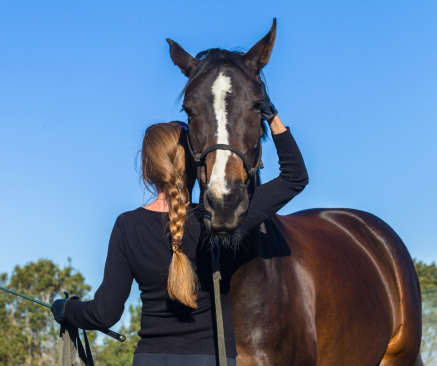
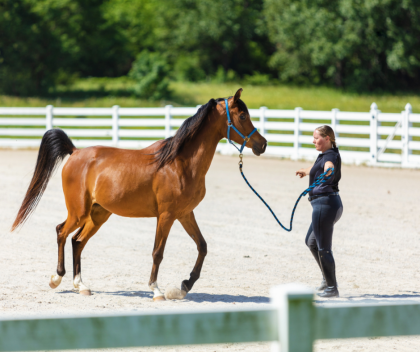
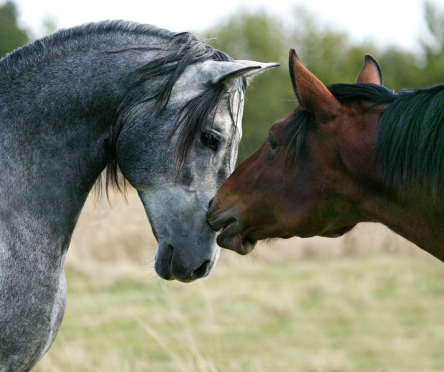
Some training methods are based on the idea that we need to show our horses that we are in charge. In other cases we see the tendency in other, milder forms, such as “the horse has to behave” or “you have to show the horse who’s in charge.” But does it really make sense?
What is dominance?
Dominance is a term that stems from behavioral biology. It is a branch of science that concerns observation and mapping of animal behavior.
Behavioral biology defines dominance as ”The mechanism that has the purpose of eliminating the element of competition within the herd.”
The mechanism controls the underlying motivation behind instinctive behavior. If we take a closer look at the definition in itself, it concludes that the motivation behind dominance is to eliminate the element of competition in the herd.
A species-specific hierarchy
A herd is defined as “a group of individuals of the same species that live together and have an internal hierarchy that can vary based on time, situation etc.”
A hierarchy is “a ranking system within a species that is formed and maintained through dominance and superiority.” Here it is central that we as the definition address it as something that goes on within the same species.
In other words, dominance and hierarchy cannot exist across species, and therefore not between humans and horses. According to behavioral biology, it is simply not possible.
The herd is controlled by behavioral patterns
Dominance can also be called superiority and is the direct opposite of inferiority. Together, these two terms are what define and maintain a hierarchy.
We know from observations that horses use behavioral elements from dominance and inferiority to communicate in the internal hierarchy. An example is when they must find individual spaces around forage when they eat.
When a new horse arrives in the herd, we will often see hard nuances of the behavioral patterns that belong to these categories. But in everyday life we usually see far less nuances because communication flows easily.
The superior horse
When a horse shows dominant behavior towards another horse, the superior horse will usually have a forward leaning body posture and a body language where both weight and movement is towards the other horse. The horse might pin its ears, stare intensely, or maybe even kick, bite or chase the other horse. However, quite often it is enough for the horse to look in the direction of the other horse.
The inferior horse
When a horse shows inferior behavior towards another horse, the behavior will often be in the direction away from the other horse. Elusive posture and behavior – or simply that the horse moves a step or two away from the other horse are all inferior signals.
Dominance versus inferiority
Every time a horse moves the other horse on the field, it is an interaction between dominance from one horse and inferiority from another horse. Interaction between these signals can vary depending on situation, time, composition of the herd and so on.
Thus, a horse can show dominance and get another horse to move away from the hay, but the roles might be switched around later the same day.
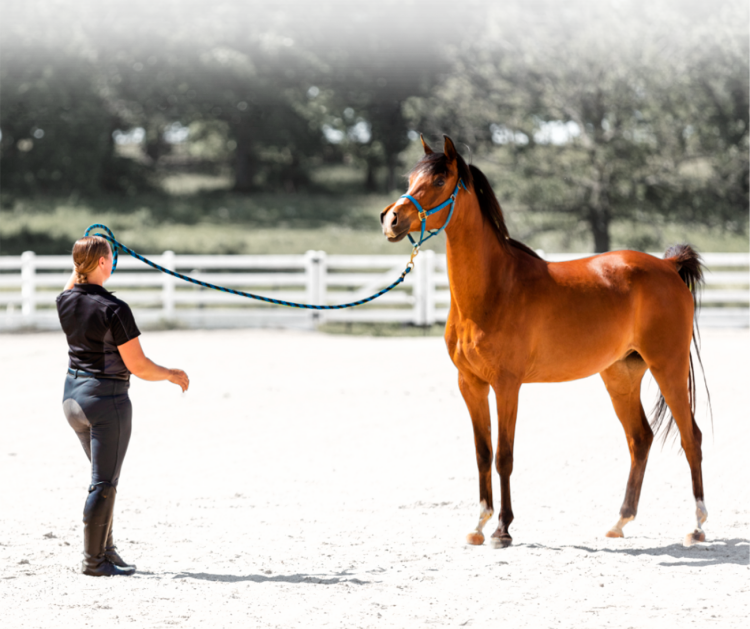
By Bettina Hvidemose Riisberg